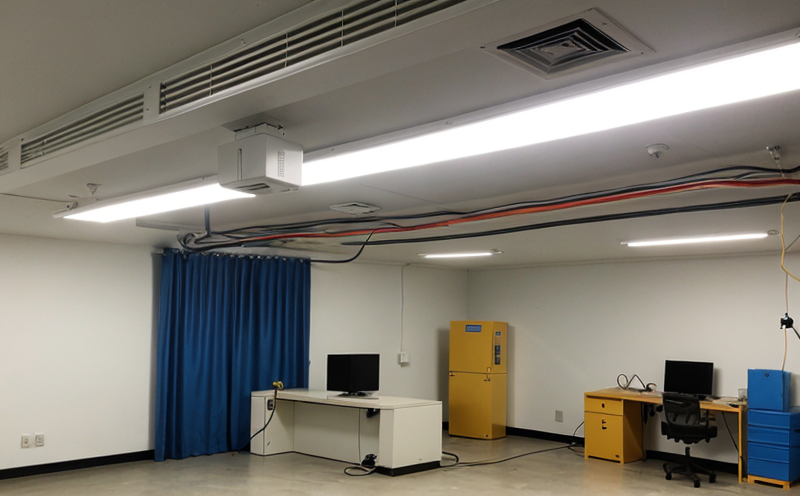EN 50160-1 Public Network Voltage Quality
The EN 50160-1 standard is a cornerstone for ensuring the quality of voltage supplied to public networks in Europe. This standard is crucial for maintaining reliable and efficient power distribution, which directly impacts the performance and longevity of connected electrical systems. The standard defines the permissible variations in voltage that can be expected on public low-voltage networks, with the aim of protecting sensitive equipment from damage due to excessive voltage fluctuations.
The testing conducted under EN 50160-1 is not just about meeting compliance; it’s a vital step in safeguarding the integrity and efficiency of electrical systems. For quality managers and R&D engineers, this service ensures that the equipment they design or source meets stringent international standards. Compliance officers can rely on this test to validate that their installations are up-to-date with current regulations, avoiding potential legal issues.
The standard is particularly relevant for lighting systems, where voltage variations can affect both the lifespan of fixtures and energy efficiency. By adhering to EN 50160-1, manufacturers ensure that their products perform optimally under a range of conditions found in real-world installations. This testing also benefits procurement teams by providing assurance that suppliers meet quality benchmarks.
The technical aspects involve measuring voltage at various points within the public network to determine compliance with the prescribed limits. The standard specifies permissible variations around nominal voltage levels, which can vary depending on the type and location of the installation. Testing typically includes continuous monitoring over extended periods to capture a full picture of real-world performance.
For those working in building & infrastructure testing, this service is essential for ensuring that electrical systems meet not only regulatory requirements but also operational efficiency standards. This ensures that installations are robust against potential issues and can operate reliably under a range of conditions. The testing process itself involves detailed instrumentation that captures data on voltage fluctuations over time.
The importance of this standard extends beyond mere compliance; it contributes significantly to the sustainability and reliability of public networks. By ensuring consistent voltage quality, EN 50160-1 helps reduce energy waste, prolongs equipment lifespan, and enhances overall system performance. This is particularly critical for sectors like lighting systems, where even small variations in voltage can have noticeable impacts on efficiency.
The standard’s focus on public networks highlights its relevance to a wide range of stakeholders, from utility companies to end-users. By adhering to this standard, organizations can demonstrate their commitment to quality and reliability, which is increasingly important as the demand for sustainable infrastructure grows.
Why It Matters
The importance of EN 50160-1 cannot be overstated in ensuring that public networks operate efficiently and reliably. Voltage variations outside the specified limits can lead to a range of issues, from reduced equipment lifespan to increased energy consumption. By adhering to this standard, stakeholders in the building & infrastructure sector can mitigate these risks and ensure optimal performance.
For quality managers and R&D engineers, compliance with EN 50160-1 means that products are not only reliable but also sustainable. This is particularly important as environmental concerns continue to drive demand for energy-efficient solutions. For procurement teams, ensuring suppliers meet this standard ensures that the equipment they source is of high quality, reducing the risk of costly replacements or repairs.
The standard’s relevance extends beyond individual installations; it contributes to a broader goal of maintaining the integrity and reliability of public networks. This has significant implications for both operational efficiency and sustainability, as consistent voltage quality can lead to reduced energy waste and extended equipment lifespan across entire systems.
Scope and Methodology
| Parameter | Description |
|---|---|
| Nominal Voltage Limits | The standard specifies permissible variations around the nominal voltage, which can vary based on the type and location of the installation. |
| Measurement Points | Voltage is measured at various points within the public network to ensure consistent quality across different segments. |
| Continuous Monitoring | Data is collected continuously over extended periods to capture a full range of real-world conditions and variations. |
| Sampling Frequency | The frequency at which data is sampled ensures accurate representation of voltage fluctuations over time. |
The methodology for testing under EN 50160-1 involves detailed instrumentation that captures a comprehensive dataset. This includes continuous monitoring of voltage levels across different points in the network, with sampling occurring at predefined intervals to ensure accurate representation. The data collected is then analyzed against the specified limits outlined in the standard to determine compliance.
The process begins by establishing baseline measurements at various strategic points within the public network. These initial readings provide a reference point for subsequent monitoring and analysis. Continuous monitoring ensures that any deviations from these baseline levels are promptly detected, allowing for timely corrective action if necessary.
Benefits
Enhanced Equipment Reliability: Ensures that equipment is protected against voltage fluctuations that could otherwise cause damage or malfunction.
Sustainable Operations: Contributes to reducing energy waste and extending the lifespan of electrical systems, leading to long-term cost savings.
Compliance with International Standards: Demonstrates adherence to recognized international standards, enhancing credibility and trustworthiness.
Operational Efficiency: Ensures that installations operate efficiently under a range of conditions, maximizing performance and minimizing downtime.
Environmental Impact Reduction: By reducing energy waste and extending equipment lifespan, this testing contributes to more sustainable operations.
The benefits extend beyond immediate operational improvements; they also contribute to broader goals of sustainability and reliability. This standard helps in creating resilient infrastructure that can withstand the challenges posed by changing environmental conditions and increased demand for power.





